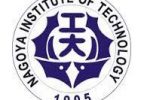NITech researchers’ new study could pave the way for sustainable energy source

NITech
Published on 15 July 2021

The material strontium titanate (SrTiO3) has shown immense potential as a photocatalyst in solar energy conversion, but it is unclear whether chemical defects can influence its properties. Researchers at Nagoya Institute of Technology, Japan, have looked into how doping with niobium affects the charge properties of SrTiO3 crystals. Their findings can help us to increase the efficiency of SrTiO3 photocatalysts, opening doors to a sustainable energy source.
In their study published in the Journal of Physics D: Applied Physics, the researchers looked at the effects of low-concentration Nb doping, as well as no doping, on the surface recombination in SrTiO3 crystals. Prof. Kato explains, “Quantitatively measuring the effects of surfaces and niobium impurities in SrTiO3 on carrier recombination can help us design photocatalysts with an optimal structure for artificial photosynthesis.”
The scientists first analyzed the surface recombination, or “decay,” patterns of undoped SrTiO3 samples as well as those doped with different concentrations of Nb, using a technique called “microwave photoconductivity decay.” To further probe into the bulk carrier recombination properties of doped samples and different energy levels introduced by Nb doping, another technique called “time-resolved photoluminescence” was used.
The researchers found that the recombination of excited carriers was not dependent on their concentration, indicating that they recombined via “surface” and “Shockley-Read-Hall” processes (which are insensitive to exciting carrier concentration). Moreover, the doped sample showed faster decay curves, which could be due to the introduction of a recombination center by Nb doping. Doping the material with high concentrations of Nb showed negative effects on carrier doping. Moreover, the size of the photocatalyst, and not its shape, influenced surface recombination and ultimately its overall efficiency.
The study concluded that moderately Nb-doped SrTiO3 could actually be more beneficial than pure SrTiO3, especially when operated at higher operating temperatures. These findings can help us design SrTiO3 photocatalysts with a lower surface recombination and higher energy conversion, leading to the development of efficient, sustainable sources of energy.
Prof. Kato optimistically concludes, “We are confident that our findings can accelerate the development of artificial photosynthesis technologies, ultimately contributing towards a greener, more sustainable society.”
